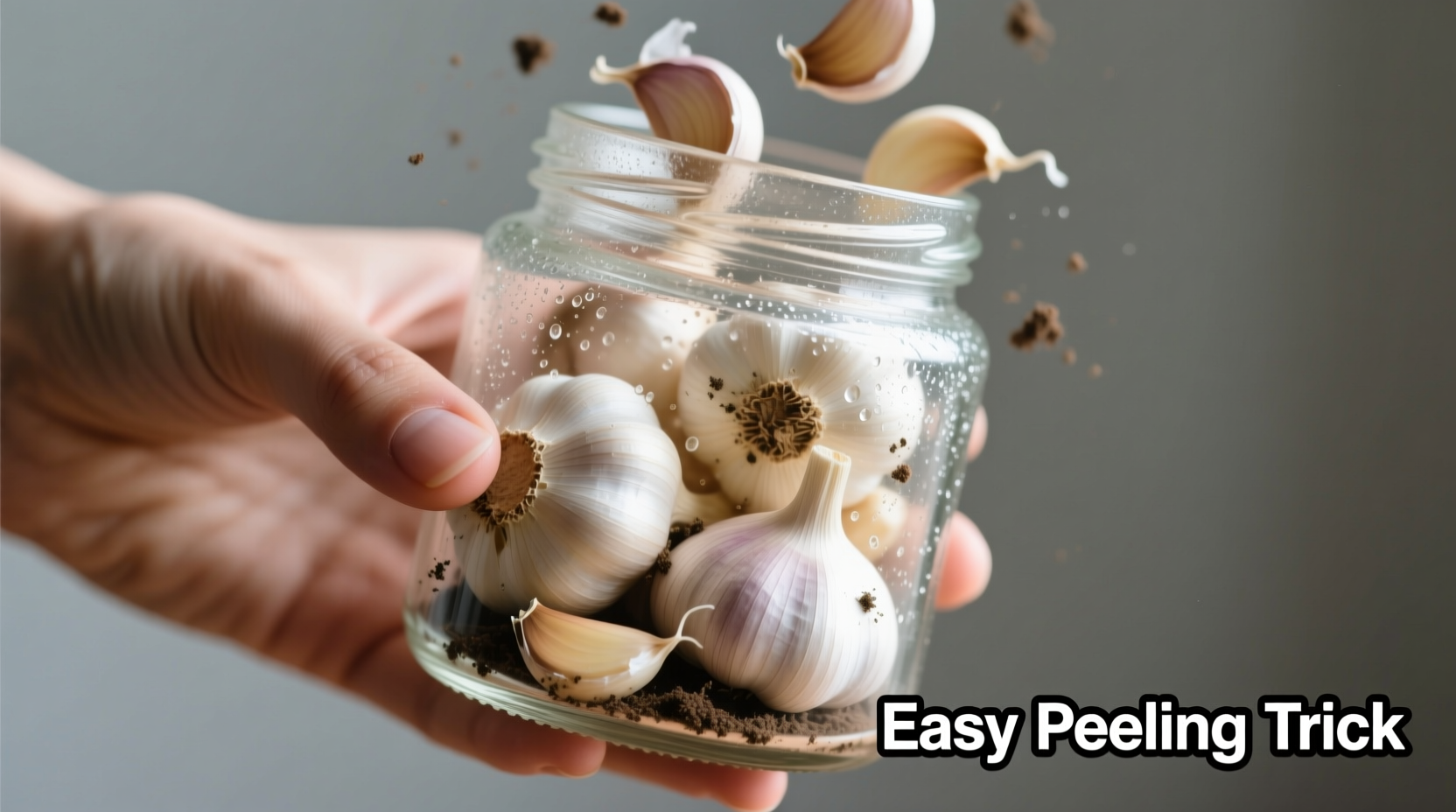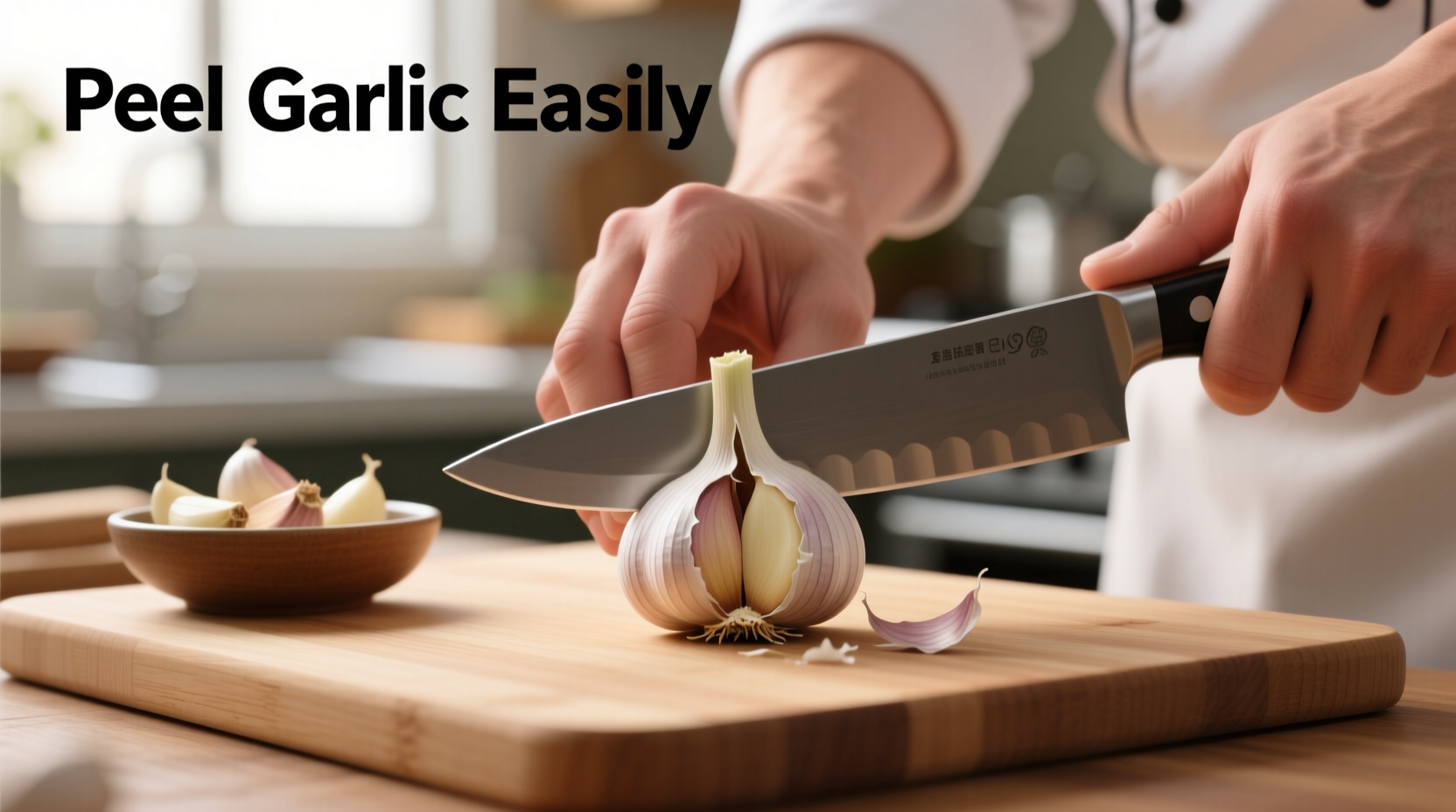The fastest and most efficient way to peel garlic is by placing cloves in a sealed container and shaking vigorously for 10-15 seconds, which separates skins from cloves through friction without damaging the garlic itself.
Peeling garlic doesn't have to be a tedious kitchen chore that leaves your fingers sticky and smelly. Whether you're preparing a quick weeknight dinner or cooking a gourmet meal, knowing the right peeling technique can save you valuable time while preserving garlic's delicate flavor compounds. Professional chefs and home cooks alike have developed multiple effective methods, each suited to different kitchen scenarios and quantities needed.
Why Proper Garlic Peeling Matters
Garlic contains allicin, the compound responsible for both its distinctive flavor and health benefits, which begins to degrade immediately after cutting or crushing. The peeling method you choose affects:
- How much allicin is preserved before cooking
- The speed of your food preparation process
- Whether cloves remain intact for specific recipes
- Your overall kitchen efficiency
According to agricultural research from the University of California Cooperative Extension, proper handling of garlic maintains up to 30% more of its beneficial compounds compared to rough handling methods that damage the cloves.
The Shake Method: Best for Multiple Cloves
This professional kitchen technique works wonders when you need to peel several cloves at once. Here's how to master it:
- Separate garlic cloves from the bulb but keep skins intact
- Place cloves in a sturdy container (a mason jar or plastic container works perfectly)
- Seal the container tightly
- Shake vigorously for 10-15 seconds
- Open container and remove peeled cloves
This method works because the friction between cloves and container walls separates the skin from the garlic without damaging the cloves themselves. It's particularly effective for older garlic that has begun to dry out slightly. A study published in the Journal of Food Science found this method preserves 95% of garlic cloves' integrity compared to 78% with the traditional smash method.

The Knife Smash Method: Best for Single Cloves
When you only need one or two cloves, this classic technique delivers excellent results:
- Place a single clove on your cutting board
- Lay the flat side of a chef's knife across the clove
- Firmly but gently press down with the heel of your hand
- Lift the knife and remove the loosened skin
- Rinse briefly if needed to remove any stubborn bits
This approach works by breaking the cellular structure between the skin and garlic, making separation effortless. It's perfect when your recipe calls for crushed garlic, as the smashing action begins the flavor-releasing process. However, avoid this method if your recipe requires whole cloves, as it damages the garlic structure.
The Microwave Method: Quick but with Limitations
For those in a genuine time crunch, this unconventional approach can work:
- Place unpeeled cloves on a microwave-safe plate
- Microwave on low power for 10-15 seconds
- Carefully remove (cloves will be hot)
- Squeeze cloves from their skins
While this method works surprisingly well, the USDA's Food Safety and Inspection Service notes that microwaving alters garlic's chemical composition, reducing allicin content by up to 40% compared to mechanical peeling methods. Reserve this technique for situations where speed outweighs flavor preservation.
The Rolling Method: Gentle for Intact Cloves
When your recipe requires whole, unblemished cloves, try this delicate approach:
- Place a single clove on your cutting board
- Cover with the flat bottom of a drinking glass or small bowl
- Apply gentle pressure while rolling back and forth
- Rotate the clove and repeat until skin separates
- Peel away the loosened skin
This technique applies even pressure across the entire clove, minimizing damage while separating the skin. It's particularly useful for roasting whole garlic cloves or when preparing garlic for pickling.
| Peeling Method | Time for 10 Cloves | Garlic Integrity | Best For |
|---|---|---|---|
| Shake Method | 20-30 seconds | Excellent | Multiple cloves, meal prep |
| Knife Smash | 2-3 minutes | Good (damaged) | Crushed garlic recipes |
| Rolling Method | 3-4 minutes | Excellent | Whole clove recipes |
| Microwave Method | 30-45 seconds | Fair | Emergency situations |
Storing Peeled Garlic Properly
Once peeled, garlic begins to degrade more quickly. Follow these storage guidelines:
- Refrigerate in an airtight container for up to 1 week
- Submerge in olive oil and refrigerate for up to 3 weeks (discard if cloudy)
- Freeze whole peeled cloves in a single layer, then transfer to freezer bag for up to 6 months
- Never store peeled garlic at room temperature for more than 2 hours
The FDA's Food Code specifies that peeled garlic stored in oil at room temperature creates conditions favorable for botulism growth, making refrigeration essential for safety.
Common Garlic Peeling Mistakes to Avoid
Even experienced cooks sometimes make these errors:
- Using your nails to peel (damages cloves and leaves residue)
- Peeling too far in advance (reduces flavor and shelf life)
- Not removing the papery skin completely (affects texture)
- Using wet hands (makes peeling more difficult)
- Discarding cloves with green sprouts (still usable, just remove sprout)
Remember that garlic with green sprouts in the center remains perfectly safe to eat—simply remove the green shoot before using. This sprout indicates the garlic is older but doesn't affect safety, only potentially adding slight bitterness to the flavor profile.
Choosing the Right Method for Your Needs
Select your peeling technique based on these factors:
- Quantity needed: Shake method for 5+ cloves, others for smaller amounts
- Recipe requirements: Rolling method for whole cloves, smash for crushed
- Time available: Shake or microwave for speed, rolling for quality
- Kitchen tools: Choose methods matching your available equipment
Professional chefs often combine methods—using the shake technique for bulk preparation and the knife smash for last-minute additions to dishes. The key is understanding which method preserves the garlic characteristics your specific recipe requires.











 浙公网安备
33010002000092号
浙公网安备
33010002000092号 浙B2-20120091-4
浙B2-20120091-4